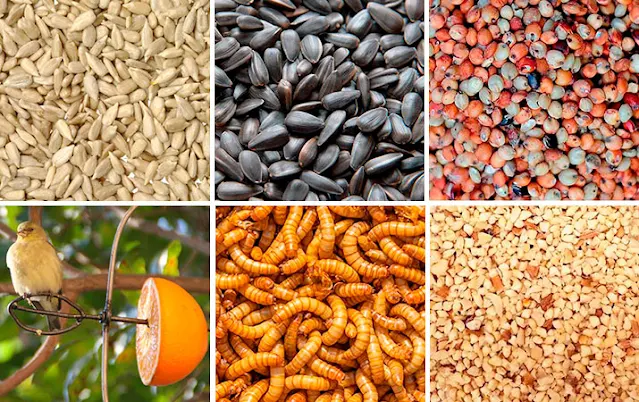Birds are a fascinating group of animals that come in a variety of shapes, sizes, and colors. They are found in almost all habitats around the world, from the depths of the oceans to the tops of the mountains. One of the most important aspects of a bird's life is its diet, which can vary greatly depending on the species and the habitat it lives in. In this article, we will take a closer look at the diet of different bird species and the factors that influence their feeding habits.
Before we dive into the specifics of bird diets, it is important to understand the basics of bird anatomy and physiology. Birds have a specialized digestive system that allows them to extract nutrients from their food efficiently. Their digestive system consists of the mouth, esophagus, crop, proventriculus, gizzard, small intestine, and large intestine. Food is first ingested in the mouth, where it is broken down mechanically by the beak and tongue. From there, it passes down the esophagus and into the crop, a muscular pouch in the neck where food can be stored for later digestion. The proventriculus, or true stomach, is where digestive juices are secreted to break down the food. From there, the food passes into the gizzard, a muscular organ that grinds the food into smaller pieces using small stones that the bird has ingested. The small intestine is where the nutrients are absorbed into the bloodstream, while the large intestine is responsible for removing any waste products.
With this basic understanding of bird anatomy and physiology, we can now move on to the different types of bird diets. Birds can be classified into three main groups based on their diet: carnivorous, herbivorous, and omnivorous.
Carnivorous birds are those that primarily eat other animals. These birds are often called birds of prey, and include eagles, hawks, falcons, and owls. They have sharp beaks and talons that allow them to catch and kill their prey. The diet of carnivorous birds can vary depending on the species and the habitat they live in. For example, eagles and hawks primarily feed on mammals such as rodents, rabbits, and even deer, while owls tend to prey on smaller animals such as mice, voles, and insects. Falcon diets can also vary depending on the species and the region they inhabit. For example, peregrine falcons primarily feed on other birds, while gyrfalcons feed on mammals such as lemmings and arctic hares.
Herbivorous birds, on the other hand, primarily feed on plant material such as seeds, fruits, and leaves. These birds have specialized beaks and digestive systems that allow them to break down and extract nutrients from tough plant material. Some examples of herbivorous birds include finches, doves, and parrots. Finches primarily feed on seeds, while doves feed on seeds and fruits. Parrots have a more varied diet that includes seeds, fruits, nuts, and even flowers.
Finally, omnivorous birds are those that eat both animal and plant material. These birds have a more varied diet that allows them to adapt to a wide range of habitats and food sources. Some examples of omnivorous birds include crows, gulls, and pigeons. Crows and gulls are opportunistic feeders that will eat almost anything they can find, including insects, small mammals, fruits, and even garbage. Pigeons, on the other hand, primarily feed on seeds and grains but will also eat insects and other small animals if they are available.
While the classification of birds based on their diet is useful, it is important to remember that many bird species have more complex feeding habits that cannot be easily classified. For example, some














0 Comments